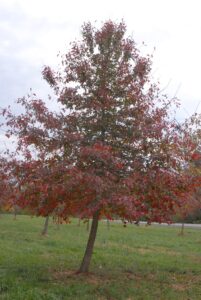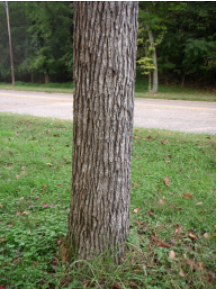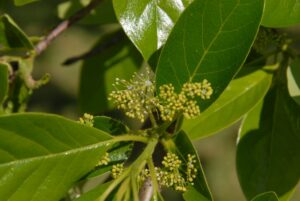Tree expert Michael Dirr has called the Black Tupelo “one of the best and most consistent trees for fall color”.  Also called the Black Gum tree, it is a great substitute for the Sweet Gum tree which produces a nuisance spiky fruit.
Also called the Black Gum tree, it is a great substitute for the Sweet Gum tree which produces a nuisance spiky fruit.
Botanical Name: Nyssa sylvatica
Characteristics: This medium-sized tree is often used as a shade tree or specimen tree. Well known for its fall color, the glossy leaves can boast vibrant shades of yellow, orange, red, and purple simultaneously. The Black Gum tree generally has the same desired growth habit of the Sweet Gum, with one central leader. This “excurrent” growth form produces a structurally stronger tree than one with multiple leaders. The tree’s small flowers and berries are a food source to wildlife such as butterflies, bees, and birds. The bark adds interest and is said to resemble alligator hide.
Hardiness Zone: Zones 4-9
Requirements: The Black Tupelo is a very low maintenance tree. It is tolerant of poorly drained soils and can grow in standing water. This species is also tolerant of drought and is adaptable to many soil types. The Black Gum prefers full sun to part shade.
Pest Susceptibility: This tree has an unusually high resistance to serious pests and diseases. Leaf miners, scale, cankers, and leaf spots are occasional minor problems that can occur on the Black Tupelo.
Give us a call to add one of these low maintenance and beautiful trees to your landscape!



